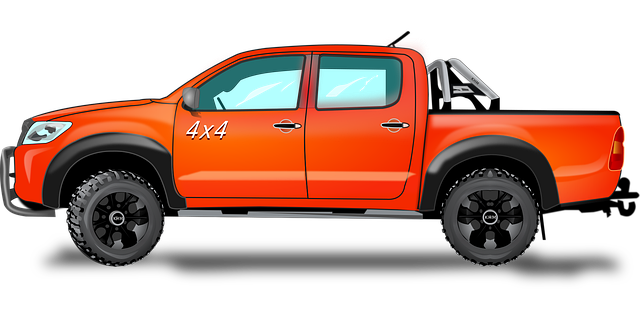Brownsville fleet leverages essential truck recovery equipment like quick disconnects (QDs) for efficient and safe operations. QDs streamline disconnection and reconnection of trailers, hoses, and cables without tools, minimizing downtime during tasks such as cargo loading, equipment deployment, or maintenance. This technology enhances overall fleet efficiency, reduces accidents, and enables swift recoveries in diverse environments, including steep slopes and muddy ports. By combining QDs with powerful winches, heavy-duty tow bars, hydraulic lifts, and air bags, Brownsville maintains a safe and productive maritime operation, optimizing response times during emergencies while extending vehicle lifespans. Future trends include advanced integration of QD technology and adoption of real-time data tracking for enhanced fleet management.
Quick disconnects (QDs) are transforming truck maintenance, offering swift and efficient solutions for various repairs. This article delves into the world of QDs, exploring their fundamental role in streamlining vehicle servicing. From understanding their basic principles to examining case studies like the Brownsville Fleet’s successful implementation, we uncover the benefits and challenges. We also look at different types of truck recovery equipment and future trends, highlighting how QDs are revolutionizing fleet management, particularly in terms of cost savings and operational efficiency, with a special focus on Brownsville fleet’s impressive utilization of truck recovery equipment.
- Understanding Quick Disconnects: A Basic Overview
- The Role of Quick Disconnects in Truck Maintenance
- Brownsville Fleet: Case Study on Efficient Recovery
- Types and Applications of Truck Recovery Equipment
- Benefits and Challenges of Implementing Quick Disconnects
- Future Trends in Truck Fleet Management and Quick Disconnect Technology
Understanding Quick Disconnects: A Basic Overview

Quick disconnects, also known as couplers or hitch systems, are essential components in various industries, particularly in truck and fleet management. These mechanisms enable efficient and swift disconnection and reconnection of trailers or accessories from the main vehicle, providing a time-saving solution for operations like cargo loading, equipment deployment, or routine maintenance. For instance, in the context of Brownsville fleet management, where efficiency is paramount, quick disconnects streamline processes by minimizing downtime during truck recovery equipment usage.
In the case of large fleets, such as those found in industrial or transportation sectors, understanding how these systems work becomes crucial. Quick disconnects come in various types and designs, each suited for specific applications. They typically feature robust mechanisms that guarantee secure connections while allowing for quick release, ensuring safety and convenience during transport or site transitions. In the event of an emergency stop or sudden need to detach a trailer, these innovative tools provide a rapid response solution, thereby enhancing overall fleet efficiency and operational effectiveness.
The Role of Quick Disconnects in Truck Maintenance

Quick disconnects play a pivotal role in maintaining the efficiency and safety of trucks, especially within the bustling Brownsville fleet operations. These specialized mechanisms facilitate swift and seamless disconnection of various components, such as hoses, cables, or pipes, without the need for tools. This feature is particularly advantageous during urgent truck recovery equipment operations, where time is of the essence.
By employing quick disconnects, maintenance teams in Brownsville can significantly streamline routine inspections and repairs. This not only enhances overall fleet productivity but also ensures that trucks are returned to service promptly, minimizing downtime. Moreover, the use of these disconnects promotes better safety practices by reducing the risk of accidents associated with manual, tool-dependent disconnections, especially in tight or challenging vehicle access points.
Brownsville Fleet: Case Study on Efficient Recovery

The Brownsville Fleet, a renowned maritime entity, serves as an excellent case study for understanding efficient truck recovery using specialized equipment. Their operation involves a vast fleet of vehicles, often facing challenges in quick and safe recovery processes due to diverse terrains and weather conditions. To overcome these hurdles, the fleet has implemented advanced truck recovery equipment tailored for their unique needs.
This equipment includes robust winches, heavy-duty tow bars, and innovative lifting mechanisms designed to handle various situations. For instance, their fleet managers have witnessed significant improvements in response times during emergency recoveries. The integration of these tools has streamlined operations, ensuring efficient vehicle retrieval from difficult locations, such as steep slopes or muddy ports, thereby enhancing overall operational effectiveness and safety for the Brownsville Fleet.
Types and Applications of Truck Recovery Equipment

Truck recovery equipment comes in various types, each designed for specific applications, catering to diverse needs across different industries. One such notable category is the quick disconnect system, ideal for fast and efficient vehicle recovery operations. These systems enable swift attachment and detachment of recovery devices, making them a favorite among emergency services and towing companies. For instance, the Brownsville fleet relies on these versatile tools to manage a wide range of incidents, from routine roadside assists to complex collision recoveries.
In addition to quick disconnects, other common types include winch systems, hydraulic lifts, and air bags. Winches are powerful machines used for pulling or lifting vehicles, while hydraulic lifts offer precise control over vehicle positioning, making them suitable for confined spaces. Air bags, on the other hand, provide a soft, controlled descent, crucial for safe vehicle placement during recovery operations. The Brownsville fleet leverages these diverse options to ensure comprehensive coverage of various truck recovery scenarios, enhancing safety and efficiency in every operation.
Benefits and Challenges of Implementing Quick Disconnects

Implementing quick disconnects (QDs) in truck operations, such as those found in the Brownsville fleet, offers significant benefits. QDs streamline recovery and maintenance processes by allowing for swift and efficient disconnection of components. This is particularly advantageous when dealing with specialized equipment or during emergencies, reducing downtime and enhancing safety. With QDs, technicians can rapidly isolate problematic areas, facilitating faster repairs and minimizing costs associated with extended idling.
However, challenges exist when adopting QD technology. Compatibility issues with existing fleet infrastructure and initial installation costs can be prohibitive. Additionally, proper training is essential to ensure safe and effective use of QDs, requiring investment in employee development. Despite these hurdles, the efficient recovery capabilities of QDs make them a valuable asset for any fleet, including Brownsville’s, aiming to optimize operations and enhance overall vehicle lifespan.
Future Trends in Truck Fleet Management and Quick Disconnect Technology

As technology advances, future trends in truck fleet management are expected to revolutionize the industry. One prominent development is the increased integration of quick disconnect technology, especially in Brownsville fleet operations. This innovative system allows for swift and efficient hookup and unhookup of trailers, streamlining operations at ports and warehouses. By automating these processes, fleet managers in Brownsville can reduce labor costs, minimize downtime, and enhance overall productivity.
The adoption of advanced truck recovery equipment is another emerging trend. These cutting-edge systems enable faster recovery of stolen trucks, significantly reducing financial losses for fleet owners. With GPS tracking, real-time data, and instant alerts, Brownsville fleet managers gain valuable insights into their vehicles’ locations, helping them to react promptly in case of theft or emergency situations. This technology promises to make fleet management more proactive and secure in the future.
Quick disconnects, as highlighted by the case study on the Brownsville Fleet, are transforming truck maintenance and recovery. By simplifying attachment and detachment processes, they enhance efficiency and reduce downtime. As technology advances, future trends promise even greater integration of quick disconnect systems into truck fleet management, further optimizing operations and promoting cost-effectiveness. For fleets seeking to stay competitive, investing in truck recovery equipment, including quick disconnects, is a strategic step towards success in today’s dynamic transportation landscape.



